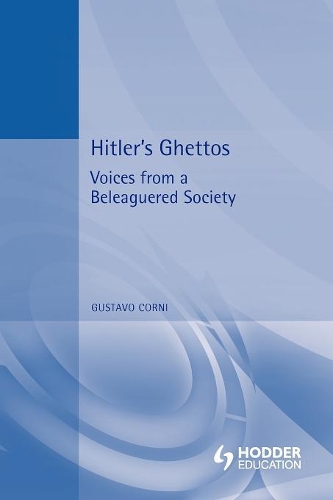
Hitler's Ghettos: Voices from a Beleaguered Society 1939-1944
(Paperback)
Publishing Details
Hitler's Ghettos: Voices from a Beleaguered Society 1939-1944
By (Author) Gustavo Corni
Bloomsbury Publishing PLC
Hodder Arnold
1st April 2003
United Kingdom
Classifications
Tertiary Education
Non Fiction
Second World War
Modern warfare
The Holocaust
Social groups, communities and identities
940.5318
Physical Properties
Paperback
368
Width 155mm, Height 234mm, Spine 22mm
Description
Hundreds of ghettos were created throughout eastern Europe by the Germans and their allies during World War II. Some were large - the one in Warsaw held almost half a million people in 1942 - others were very small. All had the purpose of holding the Jews separate from the rest of the population, almost invariably in extraordinarily deprived, squalid and crowded conditions. They became antechambers to the death camps but that purpose was not clear to most of their inhabitants. These cities within cities merit consideration then, not just as staging posts in the extermination of European Jewry, but as communities in their own right, with their own dynamics, in which elements of traditional pre-war Jewish society continued to exist. There have been some studies of the largest ghettos - Warsaw and Lodz - and a few accounts of some of the smaller ones; but very little examination of the ghettos as a whole. This history draws heavily on the testmonies of those who suffered in them, making use of a wide range of diaries and memoirs (and exploring the problems inherent in such sources). Other documentary sources - particularly German - are also used, but the intention is to look at the ghettos "from below", focusing on the behaviour, values and suffering, as well as on the heroism and the passiveness of the Jewish communities.
Author Bio
Gustavo Corni is Professor for Contemporary History at the University of Trento, Italy.
